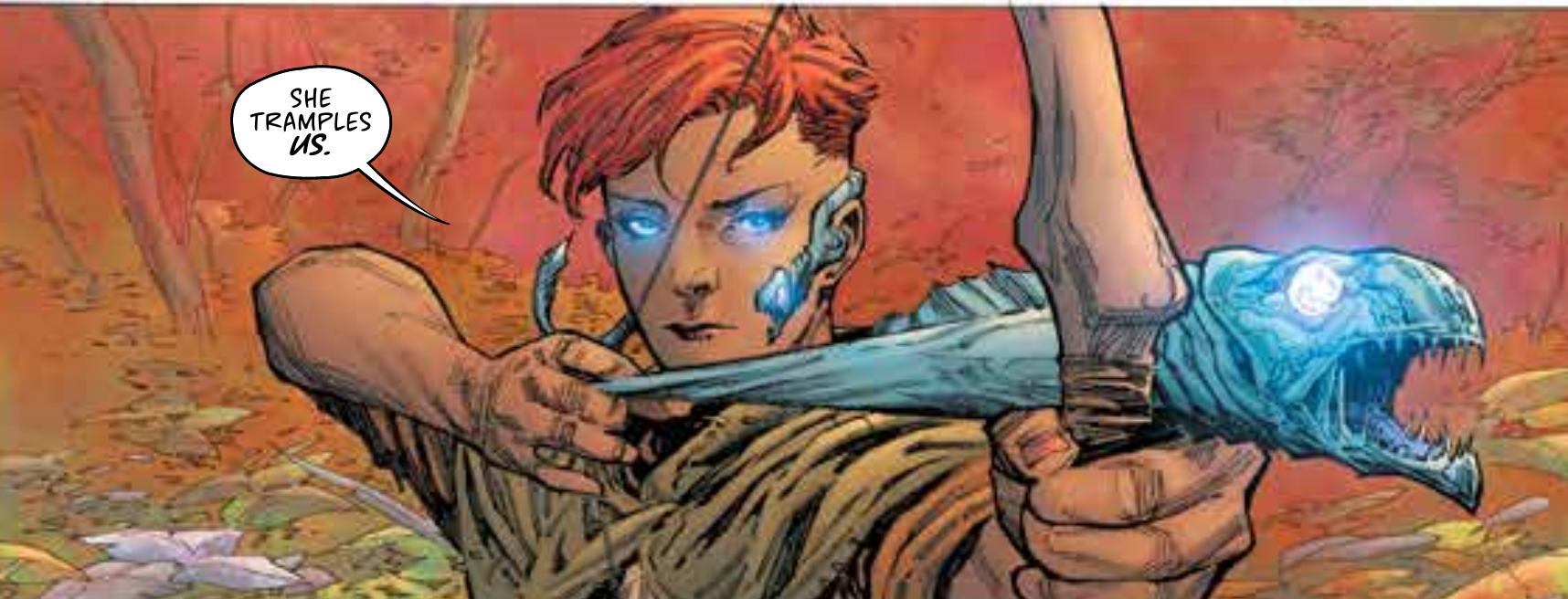We don’t often consider single issues here at Comic POW! We prefer to look at story arcs and completed series to get a better feel for what the author and artist were trying to accomplish. However, I thought it would be interesting to take a look at some comics’ first issues to predict where we think it might be going and see how that compares with where the series actually goes. This series is called “At the Beginning” and it’ll usually be for series right as they are starting up.
I am a huge fan of Rick Remender’s work. He got me hooked during his run on Uncanny X-Force where he brought a degree of pathos to what could have become just an action-filled romp. Although I am not caught up with the series, I also really enjoyed what I’ve read so far of Black Science. So it was with a great sense of joy that I received the first issue of Seven to Eternity.
Comic book writers always have a tough choice in how to begin a new series. We can start right at the beginning with all knowledge of what’s going on with the characters. We can start in media res and maybe by the end of issue 1 we have an idea of what’s going on and who these people are. Another method, often practiced by Alan Moore, is to begin with the written word. Although it can easily be a crutch, when done well it provides a sense of context that allows the characters not to have an exposition dump or explain things to each other that should already be known. Remender begins Seven to Eternity this third way, with a journal entry written by the main character.
It reveals that our main character’s father has fled an oppressive society after his efforts to change from within failed. We don’t know yet just how powerful these ideas of conviction are, but we know his father made a choice that seems pretty familiar to Americans – if you can’t get along with the civilization, leave civilization.
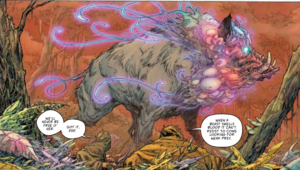
In fact, even as the second page has a magical demon warthog evocative of Princess Mononoke, the overall feeling is that this could be taking place in the American frontier. Until all of America was settled by Europeans, society’s misfits were always seeking to go a little further west and make it on their own away from those they couldn’t live with. One of the most famous of these groups being, of course, Smith and his Mormons.
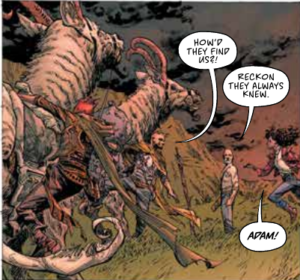
Of course, in order for the story to progress, society can’t leave this family alone. In this case, the man who was opposed to the Osidis patriarch (our main character’s father) is not content to allow them to live in the wilderness. Even though they are not actively trying to overthrow him, their unwillingness to join is an affront to him. His insistence that they relent – has an element of the Spanish Inquisition. It is hinted, but directly refuted, that either path leads to death, but the enemy would prefer to have them humbled first.
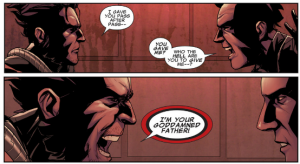
Remender, like another of my favorite authors, Johnathan Hickman, often explores family bonds within his work. In Uncanny X-Force there was both the adopted Apocalypse reincarnate as well as the opposition and tense moment between Daken and Wolverine. In Black Science the father endangers his children by bringing them into the office with his dangerous prototype. On the contrary, our protagonist’s main motivation is to save his family. His father provided one path, but our protagonist sees this as a failed path.
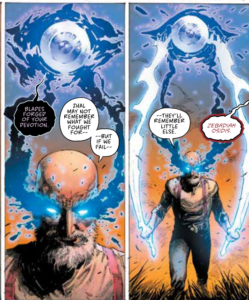
Turning to the art, Opeña and Hollingsworth do an incredible job making a comic does what comics do best – create visuals that are immersive and work best on the page. Comics often look strange when ported to movies because what works on the page doesn’t necessarily work in 3D. Additionally, Our artist and colorist do an amazing job depicting both the realistic and the fantastical. It’s not always an easy feat to find an artist that can convey so much in facial expressions while also creating things that don’t exist in our world.
If there’s one thing I find disappointing it’s that this was not an already completed story I was discovering. Any good writer leaves you wanting more after the first issue, but after reading this issue, I CRAVE the next one. Remender has introduced so many fascinating concepts and characters, not to mention the central conflict of the main character, that I CANNOT wait to get my hands on issue 2. If you’re a fan of his work and/or science fiction comics – CHECK IT OUT!
Seven to Eternity by Rick Remender with art by Jerome Opeña and Matt Hollingsworth. Lettered by the omnipresent Rus Wooton.
